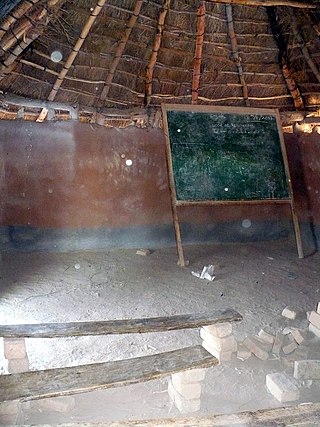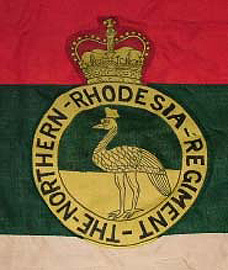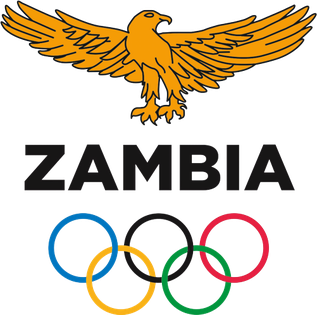Related Research Articles

Zambia, officially the Republic of Zambia, is a landlocked country at the crossroads of Central, Southern and East Africa. It is typically referred to being in South-Central Africa or Southern Africa. It is bordered to the north by Democratic Republic of the Congo, Tanzania to the north-east, Malawi to the east, Mozambique to the southeast, Zimbabwe and Botswana to the south, Namibia to the southwest, and Angola to the west. The capital city of Zambia is Lusaka, located in the south-central part of Zambia. The population is concentrated mainly around Lusaka in the south and the Copperbelt Province to the north, the core economic hubs of the country.
The history of Zambia experienced many stages from colonization to independence from Britain on October 24, 1964. Northern Rhodesia became a British sphere of influence in the present-day region of Zambia in 1888, and was officially proclaimed a British protectorate in 1924. After many years of suggested mergers, Southern Rhodesia, Northern Rhodesia, and Nyasaland were merged into the British Federation of Rhodesia and Nyasaland.

Northern Rhodesia was a British protectorate in Southern Africa, now the independent country of Zambia. It was formed in 1911 by amalgamating the two earlier protectorates of Barotziland-North-Western Rhodesia and North-Eastern Rhodesia. It was initially administered, as were the two earlier protectorates, by the British South Africa Company (BSAC), a chartered company, on behalf of the British Government. From 1924, it was administered by the British Government as a protectorate, under similar conditions to other British-administered protectorates, and the special provisions required when it was administered by BSAC were terminated.

The British South Africa Company was chartered in 1889 following the amalgamation of Cecil Rhodes' Central Search Association and the London-based Exploring Company Ltd, which had originally competed to capitalize on the expected mineral wealth of Mashonaland but united because of common economic interests and to secure British government backing. The company received a Royal Charter modelled on that of the British East India Company. Its first directors included The 2nd Duke of Abercorn, Rhodes himself, and the South African financier Alfred Beit. Rhodes hoped BSAC would promote colonisation and economic exploitation across much of south-central Africa, as part of the "Scramble for Africa". However, his main focus was south of the Zambezi, in Mashonaland and the coastal areas to its east, from which he believed the Portuguese could be removed by payment or force, and in the Transvaal, which he hoped would return to British control.

Ndola is the third largest city in Zambia and third in terms of size and population, with a population of 475,194, after the capital, Lusaka, and Kitwe, and the second largest in terms of infrastructure development after Lusaka. It is the industrial and commercial center of the Copperbelt, Zambia's copper-mining region, and capital of Copperbelt Province. It lies just 10 kilometres (6.2 mi) from the border with DR Congo. It is also home to Zambia's first modern stadium, the Levy Mwanawasa Stadium.

The University of Zambia (UNZA) is a public university located in Lusaka, Zambia. It is Zambia's largest and oldest learning institution. The university was established in 1965 and officially opened to the public on 12 July 1966. The language of instruction is English.

Livingstone is a city in Zambia. Until 1935, it served as the capital of Northern Rhodesia. Lying 10 km (6 mi) to the north of the Zambezi River, it is a tourism attraction center for the Victoria Falls and a border town with road and rail connections to Zimbabwe on the other side of the Victoria Falls. A historic British colonial city, its present population was enumerated at 177,393 inhabitants at the 2022 census. It is named after David Livingstone, the Scottish explorer and missionary who was the first European to explore the area. Until 2011, Livingstone was the provincial capital of Zambia's Southern Province.

Zambia Railways (ZR) is the national railway company of Zambia, one of the two major railway organisations in Zambia. The other system is the binational TAZARA Railway (TAZARA) that interconnects with the ZR at Kapiri Mposhi and provides a link to the Tanzanian port of Dar es Salaam.

Lower education in Zambia is divided into three levels and these are namely: primary, junior secondary and upper secondary. Higher education in Zambia has improved in the recent years due to the increase of private universities and colleges. The biggest university is the public University of Zambia which is located in the capital city of Lusaka along the great east road and hosts a number of local and international students. The Copperbelt University is the second largest public university and is located in the Copperbelt province of Zambia in Kitwe, and the youngest public university is Mulungushi University, with its main campus 26 km north of Kabwe. There are many other smaller universities, both public and private including the following: Texila American University, Zambia Open University, European University Zambia Zambia Catholic University, Cavendish University, Zambia Adventist University, Northrise University, University of Lusaka, Lusaka Apex Medical University, Woodlands University College, Copperstone University College, University of Barotseland, University of Africa, Information and Communication University, Kwame Nkrumah University of Education, Chalimbana University, Rusangu University, Robert Makasa University, Zambia Centre of Accountancy Studies and there are various Health training Institutes offering Diplomas in clinical medicine Registered Nursing

The following outline is provided as an overview of and topical guide to Zambia:
Zambia, officially known as the Republic of Zambia, is a landlocked country in Southern Africa. The neighbouring countries are the Democratic Republic of the Congo to the north, Tanzania to the north-east, Malawi to the east, Mozambique, Zimbabwe, Botswana, and Namibia to the south, and Angola to the west. The capital city is Lusaka, located in the southeast of the country. The population is concentrated mainly around the capital and the Copperbelt to the northwest.

Lusaka is the capital and largest city of Zambia. It is one of the fastest-developing cities in southern Africa. Lusaka is in the southern part of the central plateau at an elevation of about 1,279 metres (4,196 ft). As of 2019, the city's population was about 3.3 million, while the urban population is estimated at 2.5 million in 2018. Lusaka is the centre of both commerce and government in Zambia and connects to the country's four main highways heading north, south, east, and west. English is the official language of the city administration, while Bemba, Tonga, Lenje, Soli, Lozi, and Nyanja are the commonly spoken street languages.
The Bantu Educational Kinema Experiment (BEKE) was a project of the International Missionary Council in coordination with the Carnegie Corporation of New York and British colonial governments of Tanganyika, Kenya, Uganda, Northern Rhodesia and Nyasaland in the mid-1930s. The project involved educational films played by mobile cinemas to educate the black ("bantu") people. About 35 such films, on 16mm, were produced between 1935 and 1937, when the Carnegie grant expired. The project was led by J. Merle Davis, director of the International Missionary Council's Department of Social and Industrial Research; George Chitty Latham, former head of Northern Rhodesia's Education Department; and Major Leslie Allen Notcutt, a former plantation manager in Kenya.

The history of rail transport in Zambia began at the start of the twentieth century.

The history of the Jews in Zambia goes back to the early 1900s. Jews were always a small community with a notable role in Zambian history. The history of the Jews in Zambia dates to 1901 when it was still under British Colonial rule. Northern Rhodesia was colonized in the 1890s by the British South Africa Company, otherwise known as BSAC. Initially, Northern Rhodesia was split into North-eastern and North-western Rhodesia. However, the BSAC united them in 1911 to form Northern Rhodesia, which has its capital in Livingstone, near Victoria Falls. Among the population of 1 million people, there were 1,500 white residents in Northern Rhodesia, of whom many were the Jewish settlers. Northern Rhodesia became under British Colonial Rule partially so that the British Government could increase the number of white individuals and settlers in the country, which would contribute to a wider strategy to increase the influence that the British has between Kenya and South Africa. The Jewish settlers were one of the dominant ethnic groups and became highly involved in local politics, with prominent Jewish figures driving the push for Zambian independence and African nationalist rhetoric. Northern Rhodesia’s fertile land, World War II, and independence from the British Colonial rule all had a profound impact on both immigration and emigration of Jewish refugees. The Jewish diaspora introduced trade and commerce into the region in both regional and urban areas through cattle trading, ranching, mining, communication networks, storefronts, transport, and butchery, amongst others. The Jewish settlers, whether they are Jewish through origin, birth, marriage, or confession, all formed a small, yet strong community. The Jews in Zambia were a Jewish diaspora cultural and religious settler minority group, which raises concerns about the notion of who is the coloniser, who is the colonised, who is the victim and who is the oppressor. This deems that it can be studied through a postcolonial framework. Following Zambia's independence in 1964, there was a large exodus of Jews and white individuals from the country. In 2022, there remains less than fifty Jews in Zambia.

The Northern Rhodesia Regiment (NRR) was a multi-battalion British colonial regiment raised from the protectorate of Northern Rhodesia. It was formed in 1933 from elements of the Northern Rhodesia Police, which had been formed during Company rule in 1912. Made up of black other ranks and white officers, its motto was "Different in Race, Equal in Fidelity". This motto may have been adopted following native African porters during the First World War being recognised and compensated as couriers by the British.

The National Olympic Committee of Zambia is the National Olympic Committee representing Zambia. It was created in 1951 as the National Olympic Committee of Northern Rhodesia and recognised by the IOC in 1963.
William Sellers was a British colonial health official who introduced experimental instructional methods and propaganda to Nigerian cinema. Sellers was the first director of the Colonial Film Unit, a unit initially developed to explain World War II to the African audience and build war support in the colonies but later became a medium for backing colonial development and the British way of life. Sellers' films had its share of critics, his filming technique was simple repetitive shots and plots with strict literal interpretations that a few other colonial era filmmakers like Julian Huxley felt was boring to the audience.

A komboni is a type of informal housing compound or shanty town common to Zambia, particularly the capital city of Lusaka. It is characterized by a low income and a high population density. Kombonis typically began as housing for employees of a particular company, estate, or mine. An estimated 35% of Zambians live in urban areas, and kombonis exist in many of them. It is estimated that 80% of the population of Lusaka live and work in these areas.
Timeline of Zambia (Northern Rhodesia)
References
- ↑ Burns, James (2013). Cinema and Society in the British Empire, 1895-1940. Springer. p. 74. ISBN 978-1-137-30802-3.
- ↑ Burns, James (2013). Cinema and Society in the British Empire, 1895-1940. Springer. p. 89. ISBN 978-1-137-30802-3.
- ↑ Femi Okiremuete Shaka, Colonial and post-colonial African cinema (a theoretical and critical analysis of discursive practices), PhD thesis, Warwick University, 1994, p.114-5
- ↑ Burns, James (2013). Cinema and Society in the British Empire, 1895-1940. Springer. pp. 118–9. ISBN 978-1-137-30802-3.
- 1 2 Kaplan, Irving (1969). Area Handbook for Zambia. U.S. Government Printing Office. pp. 257–8.
- 1 2 Mytton, Graham (2017). "Language and the Media in Zambia". In Sirarpi Ohannessian; Mubanga E. Kashoki (eds.). Language in Zambia. Taylor & Francis. pp. 223–4. ISBN 978-1-351-60516-8.
- ↑ John Paxton, 'Zambia', The Stateman's Year Book, 1971, pp.1619-1622.
- ↑ Chisha Mutale, Investigating Public Perception of Zambia News and Information Services in Facilitating Development in Lusaka, Master's thesis, University Of Zambia, 2016, p.5
- ↑ Fackson Banda, Zambia: Research Findings and Conclusions, African Media Development Initiative, 2006, p.26
- ↑ Edward Mapp (2007). Frame by Frame III: A Filmography of the African Diasporan Image, 1994-2004. Indiana University Press. p. 146. ISBN 978-0-253-34829-6.
- ↑ Edward Mapp (2007). Frame by Frame III: A Filmography of the African Diasporan Image, 1994-2004. Indiana University Press. p. 364. ISBN 978-0-253-34829-6.